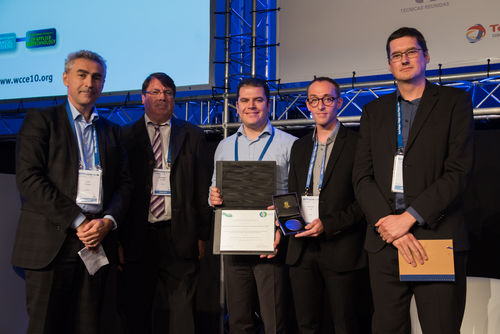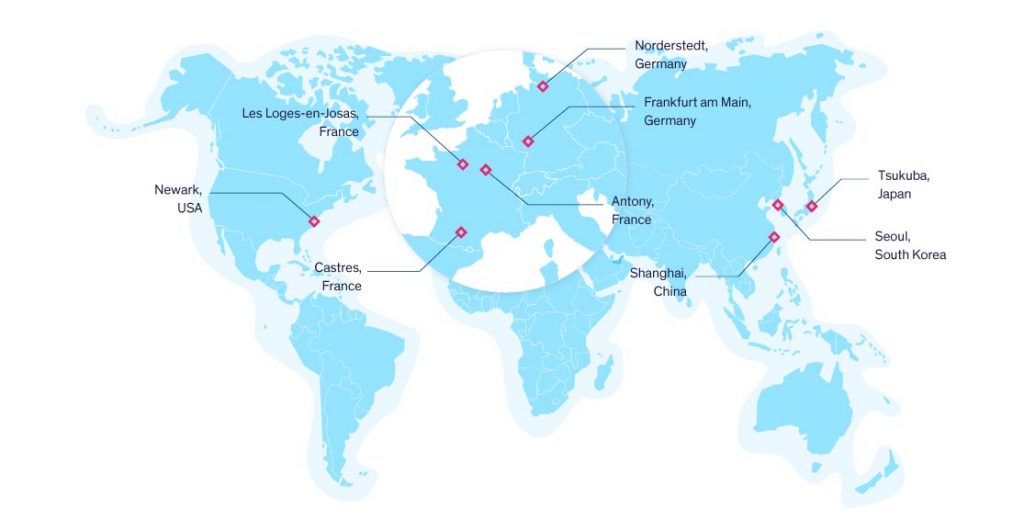3D Printing Industry are in Barcelona this week where the European Federation of Chemical Engineering (EFCE) has announced a 3D printed reactor is the winner of their innovation prize.
Taking place until the 5th October, the 10th World Congress of Chemical Engineering in Barcelona, Spain is attended by 3,000 delegates and is part of Barcelona Industry Week.
Despite the general strike led by Trade Unions today, the series of events for the week proceeded as planned. While the first day at many shows is often a little quiet, a number of exhibitors are also absent and some of the Barcelona Industry Week shows are extremely quiet according to our reporter in Barcelona.
3D printing a more efficient reactor
At the EFCE, which takes place in Hall 8 of the Fira Gran Via, the winners of several awards were also announced. Former IChemE president Richard Darton accepted the infrequently offered EFCE Honorary Membership. This prize was followed by EFCE’s 2017 Process Intensification Award for Industrial Innovation.
The Process Intensification Award was presented to a team from Air Liquide, a French multinational chemical and engineering company, for their 3D printed milli-structured heat exchanger reactor.

Process Intensification (PI) is defined as, “a chemical and process design approach that leads to substantially smaller, cleaner, safer and more energy-efficient process technology.”
Together with French start-up Poly-Shape, and academic partners, Air Liquide’s FAIR project (A French acronym for Additive Manufacturing for the Intensification of Reactors) hopes to produce compact, energy efficient and also cost-effective intensified equipment including reactors and exchangers.
To date, FAIR is the recipient of €10.5 million of the €35 the program will receive over 4 years as part of the PIA Future Investments Program, managed by Bpifrance.
The 3D printed reactor “significantly increases the efficiency of hydrogen production” via steam reforming natural gas. To do this heat is from excess steam is reused. Furthermore, heat can be transferred between the hot process streams. Air Liquide says the advanced reactor, “reduces operating costs by 20% and CO2 emissions by 12% compared with existing technology.”
The EFCE panel commented, “Air Liquide expects the reactor to interest a wide range of industries requiring hydrogen, ranging from oil and gas production, floating LNG, to household hydrogen microgeneration.”
“This reactor is a very interesting example of the use of 3D printing in the manufacture of this new intensified reactor, and has the potential to be a disruptive innovation for industry.”

Commercialization by 2020
Development of the reactor commenced in 2015, and a lab-scale version passed 3,000 hours of operation at the Air Liquide Paris Saclay research centre in 2016.
The next stage is to develop an industrial scale pilot. Construction is underway and the plant will start-up for the first time towards the end of 2018.
It is anticipated that the reactor will reach the commercial stage by 2020. Matthieu Flin and Raphaël Faure received the award on behalf of the team.
3D printing in the energy sector
As previously reported on 3D Printing Industry, several other ventures have found applications for using 3D printing in the energy sector.
For example, in a bid to improve the safety around nuclear fuel the U.S. DoE’s Technology Commercialization Fund and Idaho National Laboratory has developed an innovative additive manufacturing process for uranium-based feedstocks, called Additive Manufacturing as an Alternative Fabrication Technique (AMAFT).
Also in the U.S., GE Hitachi Nuclear Energy(GEH) were selected to lead a $2 million additive manufacturing research project to produce replacement parts for nuclear power plants. A similar project is also underway at the UK Atomic Energy Authority (UKAEA).
3D printing was also used at Krško nuclear power plant in Vrbina, Slovenia. Siemens used additive manufacturing to replace a metallic impeller for a fire protection pump at the plant.
For more exclusive content from 3D Printing Industry, subscribe to our free newsletter, follow us on Twitter and like us on Facebook.


